Useful Information for Health Professionals
RFT Pamphlet
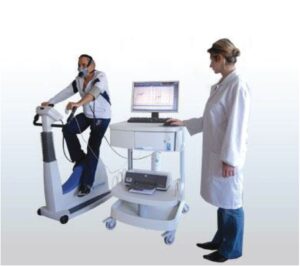
Cardiopulmonary Exercise Testing (CPET)
CPET involves measurements of the cardiac, metabolic and respiratory systems whilst the patient exercises to maximum capacity.
CPET may be a useful tool for the following:
• Assessing the risk to patients having surgery (peri operative assessment)
• Determining causes for unexplained dyspnoea
• Assessing contribution of cardiac or respiratory causes to incapacity
• Quantifying the extent of impairment
• Measure the response to and efficacy of an intervention
A comprehensive report and conclusion will be provided to referring practitioner.
Please note: Patients with known cardiac disease, who are at risk of cardiac events when exercising at maximum capacity, may not be able to undertake this test.
Spirometry
Spirometry measures the flow and volume of air entering and leaving the lungs. It is used to assess ventilatory function of a patient and to differentiate between possible obstructive or restrictive defects.
Indications for Spirometry:
• Evaluation of symptoms such as dyspnea, cough, wheeze, sputum production
• To assess known disease progression
• To monitor the efficacy of interventions
• Airway reversibility is tested using Ventolin
Stepwise approach to interpreting Spirometry
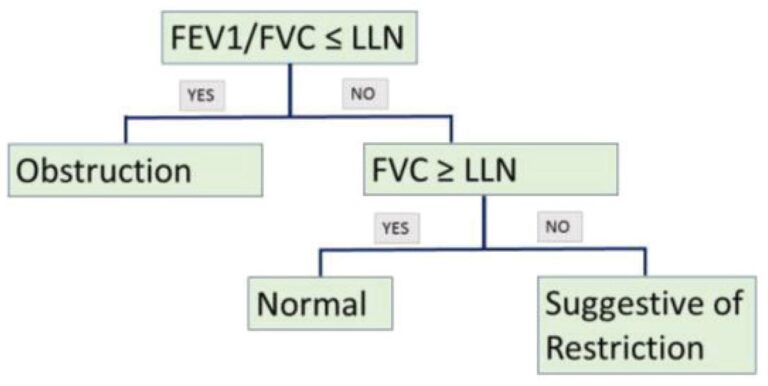
Severity of Obstruction
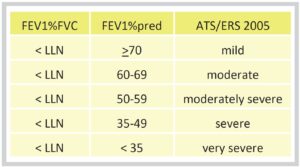
Gas Transfer
Diffusing capacity for carbon monoxide (DLCO) measures the ability of the lung to transport oxygen from the alveoli into the bloodstream. DLCO can be reduced due to many causes, including:
• Interstitial lung disease
• Emphysema
• Pulmonary hypertension
• Pulmonary embolism
• Congestive cardiac failure
• Anaemia

Expired Nitric Oxide
Expired Nitric Oxide (FeNO) is considered an important biomarker of airway eosinophilic inflammation. Measurement of FeNO assists in phenotyping asthma, in addition to, determining corticosteroid responsiveness. FeNO may also indicate exposure to allergens.
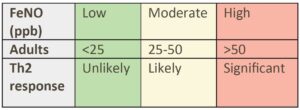
Lung Volumes
Measurement of absolute lung volumes is obtained using body plethysmography. This test is required to confirm or rule out true restriction. Lung volumes is important to quantify gas trapping.
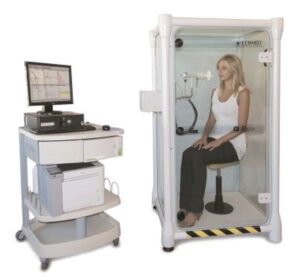
MIPS and MEPS
Maximum Inspiratory Pressure (MIP) and Maximum Expiratory Pressure (MEP) measurement is used to assess muscle strength within the respiratory system and diagnoses disease of these muscles. It is useful in the following conditions:
• Respiratory muscle weakness or neuromuscular disease is suspected
• Lung function tests show reduced vital capacity with normal gas transfer
• Assess if known respiratory muscle weakness has improved, remained stable, or worsened
About Us
At RSDC we have a particular interest in quick approach and triaging patients with suspected lung malignancy, management of pleural diseases, sleep disorders of obstructive sleep apnoea and other more complex sleep disorders, airways disease including asthma and COPD. We use a comprehensive approach to interstitial lung disease in addition to occupational and environmental lung disease.
Printable Format
Download